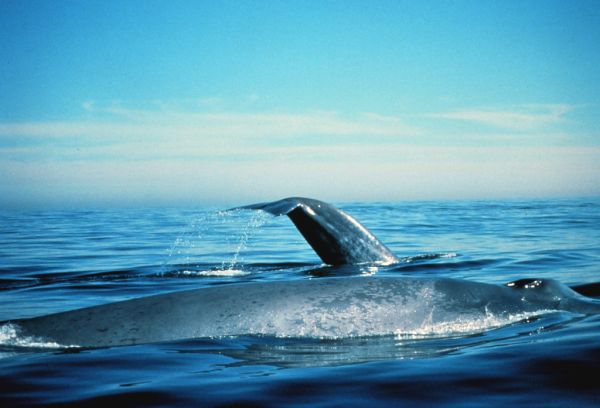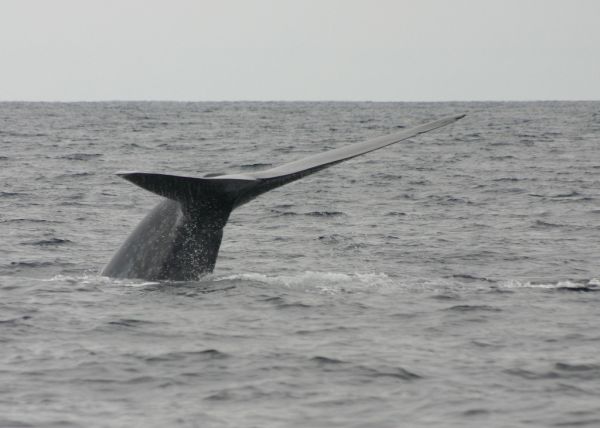Wildlife North America . com North American Animals - mamals, birds, reptiles, insects |
Blue Whale (Balaenoptera musculus)
Blue Whales on the surface, Gulf of the Farallones National Marine Sanctuary Photograph by Dan Shapiro (NOAA). Some rights reserved. (view image details) 
Blue whale tail deep dive Photograph by Seabass London / Claire. Some rights reserved. (view image details)
BLUE WHALE FACTS
DescriptionBlue whales are grayish blue mottled with lighter spots. The underside often is yellowish, due to growth of microorganisms, giving the belly a yellowish tinge. The back and sides are usually mottled with patterns that can be used for individual identification. The dorsal fin is short. The snout (rostrum) is blunt, and the jaw is broad. The throat has 50-90 grooves that run from the chin to just beyond the navel. Other Names Sulphurbottom Size Length: Males 25m; females 27m. The longest confirmed specimen was 33.5m long. The weight record is 190,000kg. Environment open ocean Food The main food is krill - a small, shrimp-like crustacean. They eat 6-7 tons of krill per day, by gulp-feeding. The throat stretches along a series of grooves enabling it to take in a huge gulp of water and krill. The water is then pushed out and the krill remain, trapped by baleen plates Breeding A single calf (rarely twins) is born after gestation period of 11-12 months. The young are 7m - 8m long at birth. Young whales grow fast and can gain up to 90 kg in weight a day. Young are weaned after 7 - 8 months by which time they are about 16m long. Range all oceans of the world, from the tropics to polar waters Conservation Status The conservation status in the 2004 IUCN Red List of Threatened Animals is "endangered". Classification
Relatives in same Genus Northern Minke Whale (B. acutorostrata) Sei Whale (B. borealis) Bryde's Whale (B. edeni) Fin Whale (B. physalus) Home | Mammals | Reptiles | Birds | Insects | Privacy Policy | Disclaimer | Contact Us |